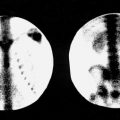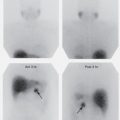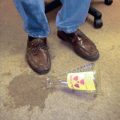Spills of Radioactive Materials
Accidental spillage of radioactive material is rare; however, spills may occur in the laboratory, in public areas such as facility hallways, in elevators, or in any hospital room or ward through contamination by patient body fluids. Spill procedures should be posted in the restricted areas where radioactive materials are used or stored and should specifically state the names and telephone numbers of persons to be notified (e.g., radiation safety officer [RSO]). They should also include instructions about area evacuation, spill containment, decontamination, and reentry.
Major radiation accidents or serious spills of radioactive contamination have rarely involved medical or allied health personnel. Usually, spills in hospitals involve only small amounts of radioactivity in which the main concern is the spread of the contamination (e.g., from contaminated shoes or clothing into public areas). Spills are considered minor or major, depending on the radioisotope and the amount of activity involved. Activities exceeding those listed in Table I.1 should be treated as major spills and addressed accordingly. The following is a general outline of the procedure to be followed in the event of a radioactive spill. The reader is also referred to NRC NUREG 1556, Volume 9, Appendix N.
| Radionuclide | Millicuries (MBq) | Radionuclide | Millicuries (MBq) |
|---|---|---|---|
| Phosphorus-32 | 1 (37) | Technetium-99m | 100 (3700) |
| Chromium-51 | 100 (3700) | Indium-111 | 10 (370) |
| Cobalt-57 | 10 (370) | Iodine-123 | 10 (370) |
| Cobalt-58 | 10 (370) | Iodine-125 | 1 (37) |
| Iron-59 | 1 (37) | Iodine-131 | 1 (37) |
| Cobalt-60 | 1 (37) | Samarium-153 | 10 (370) |
| Gallium-67 | 10 (370) | Ytterbium-169 | 10 (370) |
| Selenium-75 | 1 (37) | Mercury-197 | 10 (370) |
| Strontium-85 | 10 (370) | Gold-198 | 10 (370) |
| Strontium-89 | 1 (37) | Thallium-201 | 100 (3700) |
Stay updated, free articles. Join our Telegram channel

Full access? Get Clinical Tree






